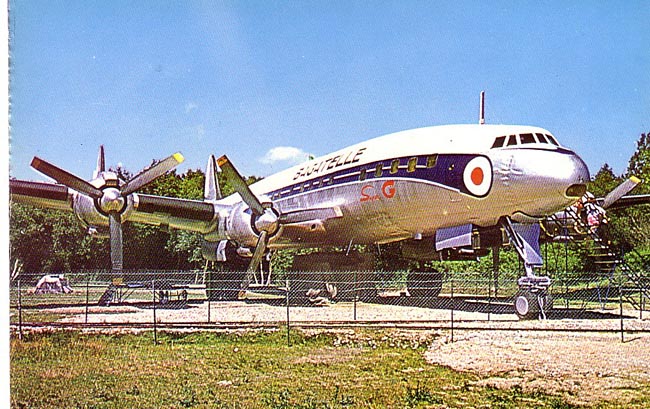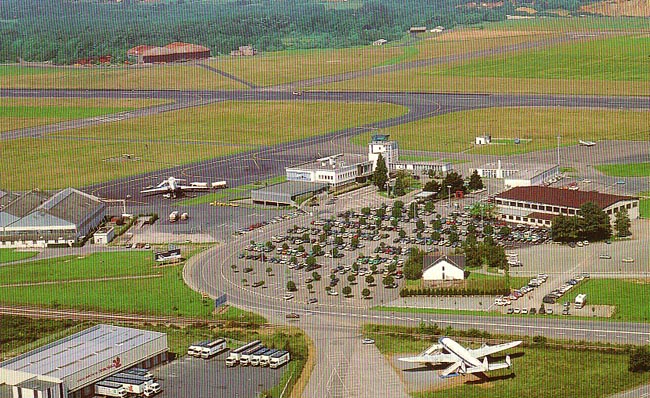
|
NEWSLETTER #64 - SEPTEMBER 2008
Members will have noticed that the US pages sometimes carry an earlier date than the main newsletter. This is because the US page is added to the main paper newsletter when it is circulated in the US in arrear of the UK edition, so it is actually published between UK paper editions.
Page 1 | Page 2
Samuel Cody – 1st recognised flight in England
In the absence of any submission of new material I need to refer you to the September 2005 issue which dealt with Samuel Cody at some length. (Remember that all issues since 2002 can be found in the on-line archive at www.aviapc.com and that all cards therein are in original colour).
The flight which was officially recorded as the first powered flight in Britain was at Farnborough on 16 October 1908 and was the fifth of a series in his British Military Aeroplane No. 1. It covered 1,390 feet.
Last months Wright feature included cards of the man as well as the flying machines, so here are two of Cody. The larger is not contemporary but No 1271 from the extensive Real Photographs Ltd series from the 1930s. The style of beard appears to have been retained from his days as a wild-west showman based on namesake Buffalo Bill Cody. The other is an enlarged vignette from a similar card to that shown in 2005 but with a different portrait. It is titled Col Cody – the “Colonel” was self-styled from his showman days.
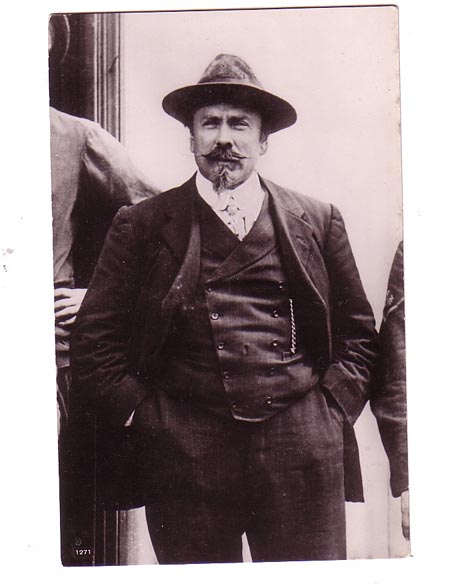
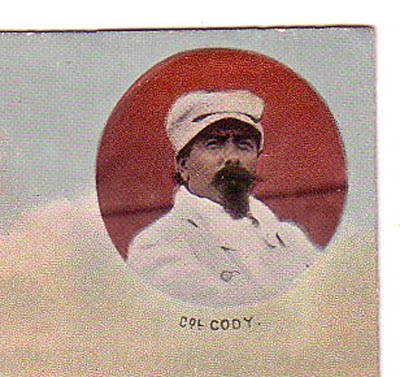
Understandably, significant events in early aviation tend not to occur in winter, so the next centenary is 2nd May 1909 when J T C Moore Brabazon made the first official flight in the UK by an Englishman. This was at Leysdown, Kent in a Voisin. Again, to do a feature on this I will need to have some card submissions
The distinctive shape of the Boeing 747 arose out the way the design was conceived and evolved, largely in conjunction with Pan American Airways. The story is told in detail in the book “Wide Body” by Clive Irving 1993. Boeing’s pioneering 707 had a major disadvantage in that its low-slung configuration made it impossible to stretch with risking a ground strike on take-off rotation. The rival DC-8 did not have this problem and therefore was being developed with higher capacity models. PanAm needed more capacity and Boeing had to respond. But Pan Am, or to be precise, president Juan Trippe , believed that he needed only a short term solution before supersonic transports became available. It was therefore part of the design brief that , after replacement by SST’s, the new Boeing should be able to serve as a freighter. Boeing had made an unsuccessful submission for the USAF contract that became the Lockheed C-5 Galaxy and this, coupled with designing the fuselage around a standard freight container, produced the first wide-body twin-aisle passenger design. To enable nose-loading the now trademark high set cockpit was adopted, which also gave advantages in all round crew vision on the ground. An alternative considered would have been to have the doors above the flightdeck, as later adopted for the A300ST Beluga. To complete the circle, the latest version of the 747 freighter is the Beluga-style extra-high & wide body Dreamlifter for Boeing internal logistics to transport parts from worldwide manufacture of 787 sub-assemblies.
During its life 747 freighters have been built new, with the nose door and in combi form with rear freight sharing with front passengers. Many more have been converted from passenger models, as envisaged by PanAm, both by Boeing and third parties. Some true freighters are window-less and many conversions have had all or some windows blanked out.
From a postcard perspective, freight operations were initially poorly represented , but with the decline of the airline-issue card, freight operators are more prominent among those still issuing. Also, whereas the passenger has virtually diappeared from airport views, being hygienically injected into the cabin through a tube, airport freight cards often stress the amount of cargo being loaded and the specialised equipment required. Here follows a selection of cards featuring the Big Boeing Boxcar.
The front card, repeated here is one of several which use the 747F nose door to generate a “grinning bird” effect.

That one is by Cargolux Luxemburg, of -400F LX-GCV – these marks were previously used by a -200F but name City of Esch identifies the – 400 series. Cargolux is probably the most prolific of cargo 747 card issuers. Here is another Cargolux - 400F LX-ICV City of Ettlebruck, together with two more grinning cargo doors. A Japan office issue from the ( probably late by this time this comes out) Italian carrier Alitalia and an early Lufthansa. The Alitalia is 400F 409, probably N409MC leased from Atlas Air.
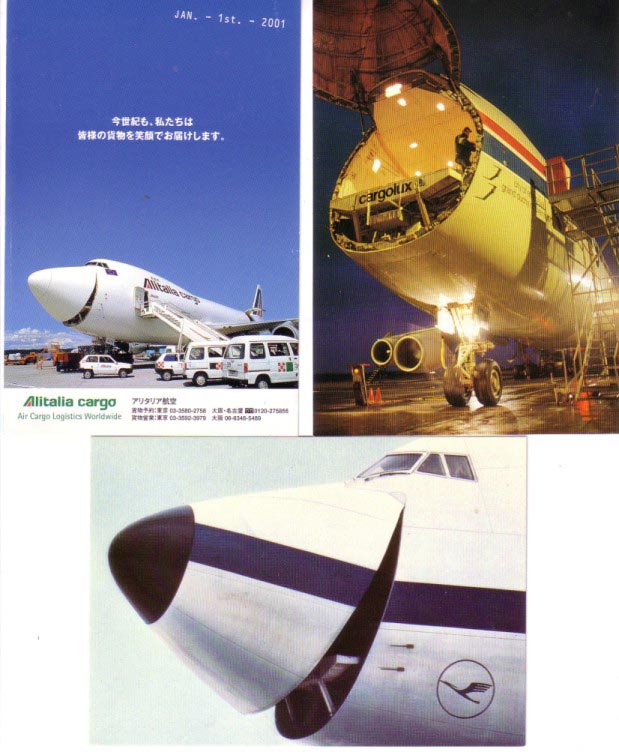
Turning away from playing games with nose doors and back to the 747 launch. PanAm took delivery of freight 747s in both windowed and window-less configurations but both with nose doors. They issued a series of large plain back , rounded corner cards in the 1970s and this one featured -200F Clipper Bald Eagle N904PA.

Clipper Mercury, N535PA, was leased from World AW 1973-0 and shown on a Frankfurt Airport issue card in a typical night scene. Below, representing the take-up of the 747 by the then leading US freight carriers, Seaboard World N701SW on an Italian ( airline issue?) card at Milan. Finally , the current generation of US carriers represented by Atlas -200 N517MC – card by www.aviationpostcards.de at unidentified German airport.

Another established US cargo carrier was Flying Tiger Line. Having absorbed rival, Slick, it would later also absorb Seaboard World before itself merging into new generation parcel carrier, FedEx. These 3 cards show, from top, converted side loading 747, then a nose loading windowless for comparison of both the aircraft and the card – and finally a plain back art card of a gift-wrapped 747.
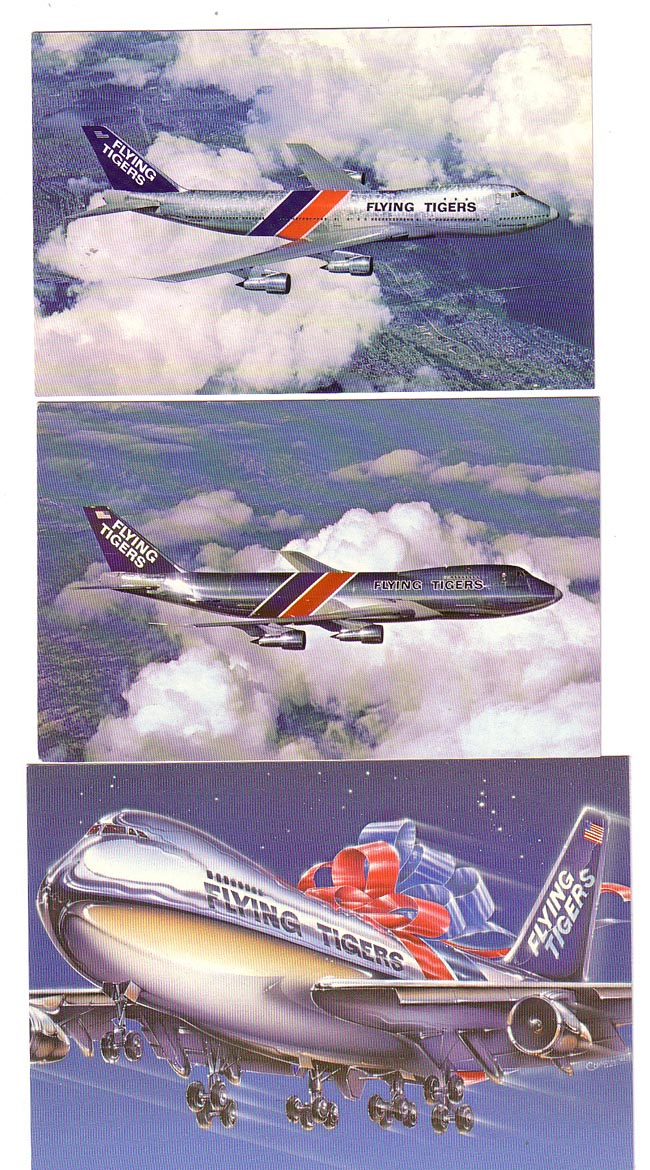
Freighters featured among the orders for the first airlines to take up the 747, but did not last long. Ironically one of the reasons was that the underfloor capacity of the standard passenger 747 was enough to meet the demand at lower cost than dedicated aircraft. The same factor undermined the specialist cargo carriers. These latter would be supplanted by the parcel carriers such as FedEx and UPS. FedEx proved the value of fleets operating hub and spoke networks and grew the concept from one based on the Dassault Falcon to one requiring 747 size aircraft for inter-continental operations. In parallel the growth of Asian manufacture of low weight high value items such as mobile phones was to lead to a revival of the dedicated freight fleet from and to those countries. The third element supporting current freight operations is the need for capacity to support US military operations. So the current 747 freight fleet consists of parcel carriers, Asia centred global logistics and military support. There follow more cards from carriers old and new. Both American Airlines and British Airways briefly operated dedicated freighters. The BA card, slightly oversize, has a timetable back for New York and Dubai-Hong Kong-Tokyo services from London, but is printed by the Frankfurt office.. The 747-200F G-KILO was later sold to Cathay Pacific.
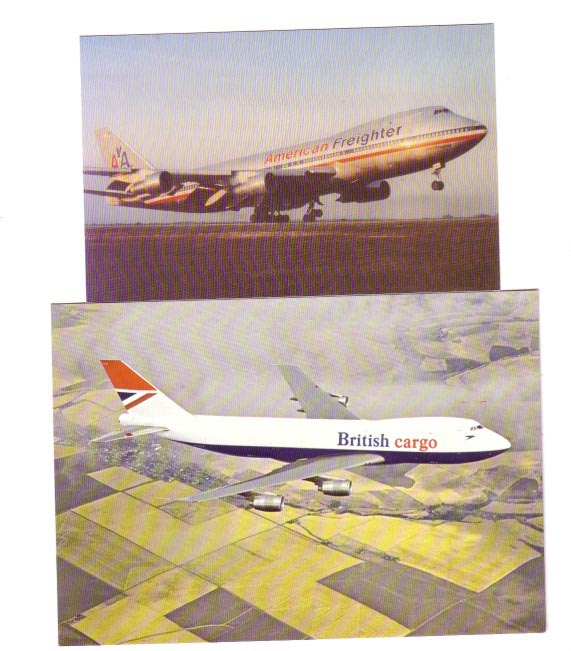
One function of cargo 747s has been to provide income for our US contributor Bill Baird who flies them for Polar Air Cargo. This one at Brno Czech Republic is N854FT which despite the suffix was never with Flying Tiger but a -200 converted ex United.

An airline which has persisted with dedicated freighters is El Al of Israel. The nature of some cargoes means that these often operate anonymously. Other operations are sub-contracted to carrier Cargo Air Lines, who issued this card with a despatch note back hinting at more peaceful operations. Next to it, representing the parcel carriers is UPS N521UP in special colours as a sponsor of the 2000 Sydney Olympics. Now 521UP WAS painted up in this scheme but the person who edited this image of it over Sydney for the Prague office made the mistake of mocking up a -300 instead of a -200.
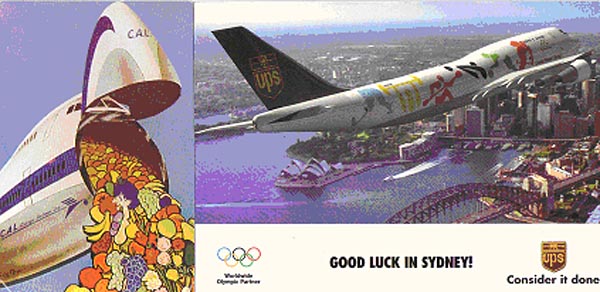
Next, the Asia- centred operations. Cards from Japanese carrier Nippon Cargo and Hong Kong Chep Lap Kok with Cathay and Atlas with a typical freight ramp foreground. All – 200 series
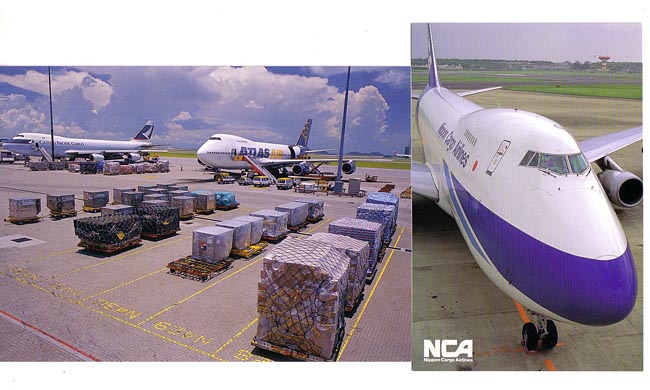
Air China and Cathay – 200s. Air China airline issues – the one with the phone no’s is from the San Francisco office and Cathay is at Tokyo-Narita in the snow.
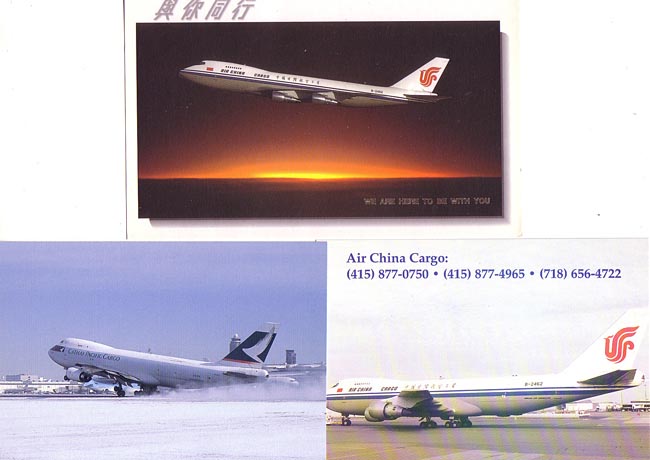
Cargolux cards often featured Hong Kong – Kai tak . Earlier Cl-44 and DC-8 cards were followed by 747-200 & -400.
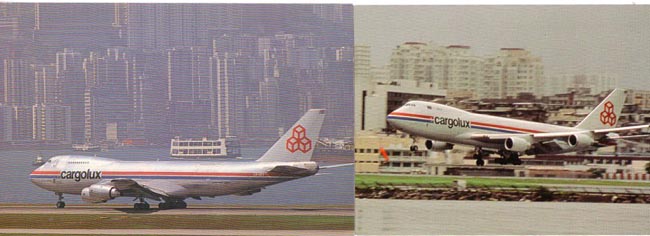
So not only has the cargo 747 provided a second use for passenger aircraft displaced , not by the SST but by intercontinental twin-jets but seems likely to remain the largest cargo carrier in service until the A380 is re-assigned, the dedicated A380 freighter having so far been unable to attract ongoing firm orders.
No sooner had an Antarctic Otter wreck featured in June than a number of other cards featuring broken aeroplanes have surfaced. Some were anonymous and required research, sometimes successful but others fruitless so far, while others carried sufficient information to either give the full story or establish a solid start point. The cards fall into three categories – crashes, storm wrecks and survivors. First the crashes….
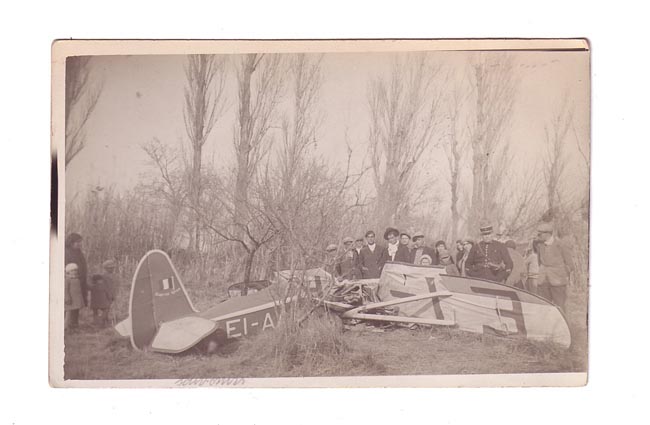
The clues here are – it’s a French card, there is a French policeman in attendance, the registration is EI-A?? and it’s a small aircraft. The tail shape would have identified a Comper Swift and EI-AAL was one such. It crashed near Marseilles 12 Feb 1932. The pilot, Manco Scally had bought the Swift new from Comper at Hooton , Cheshire – serial S.31/7 makes it the seventh built in 1931. He was attempting a flight from Ireland to Ceylon (Sri Lanka) but was killed in this crash. The next pair were found at a small local fair in the Lake District and are Kodak back. That and the landscape would have been a start point for research but the obvious type and serial number means that it was a straight forward look-up. These are both DH.86B L7596 a VIP transport of RAF 24 squadron., having previously been with British Airways Ltd as G-ADYJ. In July 1939 it was flying Biggin-Hill-Belfast with the Air Minister. The blind-flying equipment failed on approach to Belfast in cloud . Intending to divert to Blackpool, fuel shortage compelled a forced landing on Kirkby Moor, 3 miles NW of Ulverston. There were no serious injuries and the location precluded recovery and repair. The views show the main damage to the starboard wing which struck the ground after a stall at 50 ft.
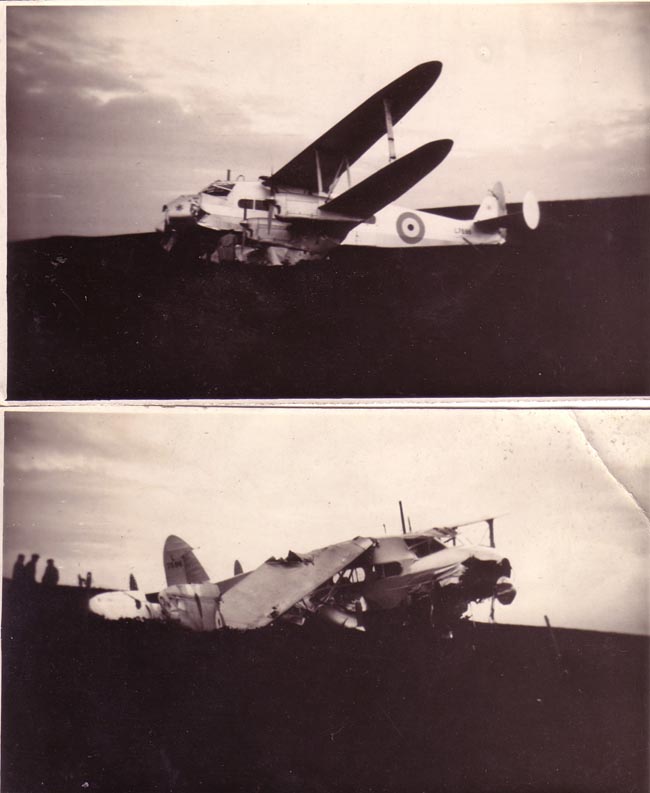
Lastly a less informative picture of a more-famous crash. This is an AZO back card of salvage operations on the floatplane Lockheed Orion-Explorer NR12283 in which world-flight pioneer Wiley Post and humorist Will Rogers were killed near Walakpi, Alaska 15 Aug 1935 on an early stage of a planned “leisurely” circumnavigation. The engine failed on take off at 50ft , dipped a wing and rolled over in shallow water. The second view, not a postcard ( from Revolution in the Sky – Lockheed singles history) , shows why the crash, from 50 ft, like the DH86, was fatal.
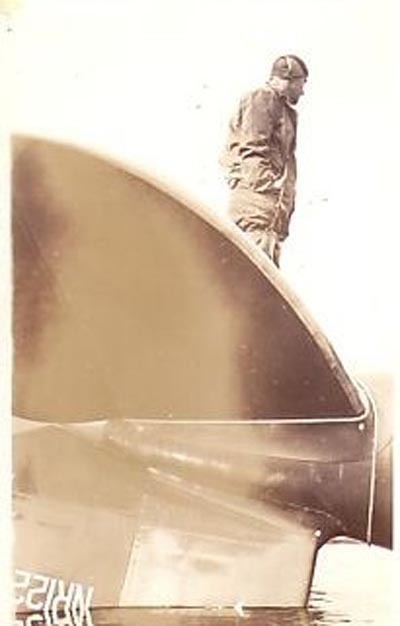
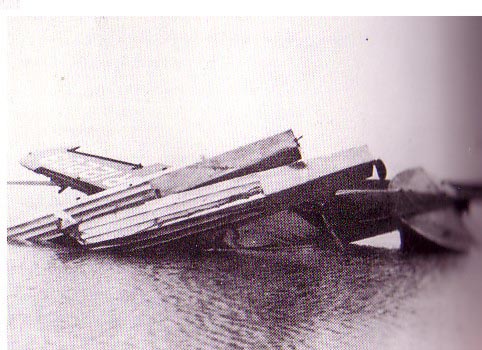
The next card, a collection of storm wrecked Cessnas – two are definitely the larger 206 model , - could equally have been in What Do You Know as it is irritatingly incompletely captioned. Presumably produced by a local photographer, the Title is “"#116 Planes at the City Airport were piled like cord-wood". But which US city was hit by this hurricane or tornado ?

All the previous cards have shown aircraft whose career ended prematurely. The rest, the relics rather than the wrecks, are some whose life was extended after withdrawal from normal service. All are Constellations – much of the detail here comes from Peter Marsons recently re-launched history. The first is a card from Brazil – anonymous with just a ref No M-242 (Manche ?) – undivided back with substantial text. The view is of an early Constellation converted into offices for Aerosur Travel Agency at Santa Cruz de la Sierra in Bolivia, viewed in 2003. This one was intended for TWA but delivered to LAV Venezuela as YV-C-AME in 1946. It returned to the US for Braniff as N2520B in 1955. Withdrawn in 1958 in surfaced in Bolivia in 1961 with the crew charged with having shot down an air force P-51 Mustang. What appears to have happened was that a smuggling flight from Miami to Uruguay was intercepted by the Mustang , which stalled while forcing the Constellation to land. The Connie was able to fly all right at 300 ft with flaps and gear extended but the P-51 could not . Impounded in Bolivia the Constellation then went through a number of ground careers. In the reverse of the usual decline and fall stories, it started by moving moved to a playground in the early 70s but by 1979 had been converted to a library with a fully air-conditioned interior. Abandoned for some years it was revived as the offices for Aerosur in the early 2000’s

The next Constellation is Super L-1049C delivered to Air France as F--BGNF 1953. A one-owner airliner it stayed with them until withdrawn and stored at Toulouse in 1964. In 1967 or 68 it was sold and transported to a theme park “Parc d’attractions Bagatelle” on the edge of the airport at Berck-Sur-Mer, Northern France. This card was issued by Bagatelle and shows the L1049 in Air France colours but modified with Bagatelle titles and the seahorse logo deleted. Like most old aeroplanes in long term outside storage it is starting to look a bit weatherbeaten. It stayed at this park until 1976 when it was moved to a hilltop site at Marquise and re-opened as a Disco-Bar. This is usually the last stage in the delcline and fall of old airliners and so it was to be with F-BGNF which was broken up by the end of 1984.
Sister L1049C F-BGNJ had a more varied career. After sale by Air France it was briefly impounded at Orly for debts of its new owner. It resurfaced on the Biafran airlift as F-BRAD with Air Fret in 1968, then with Catair 1969 and back to Air Fret 1973 for engine spares. Preserved at Nantes-Chateau Bougon airport , as on this Artaud issue air view
…it was later moved to a new site at Nantes-Atlantique in 1997 where it remains in fine condition as F-BGNJ. This second Artaud card shows the move.
|
